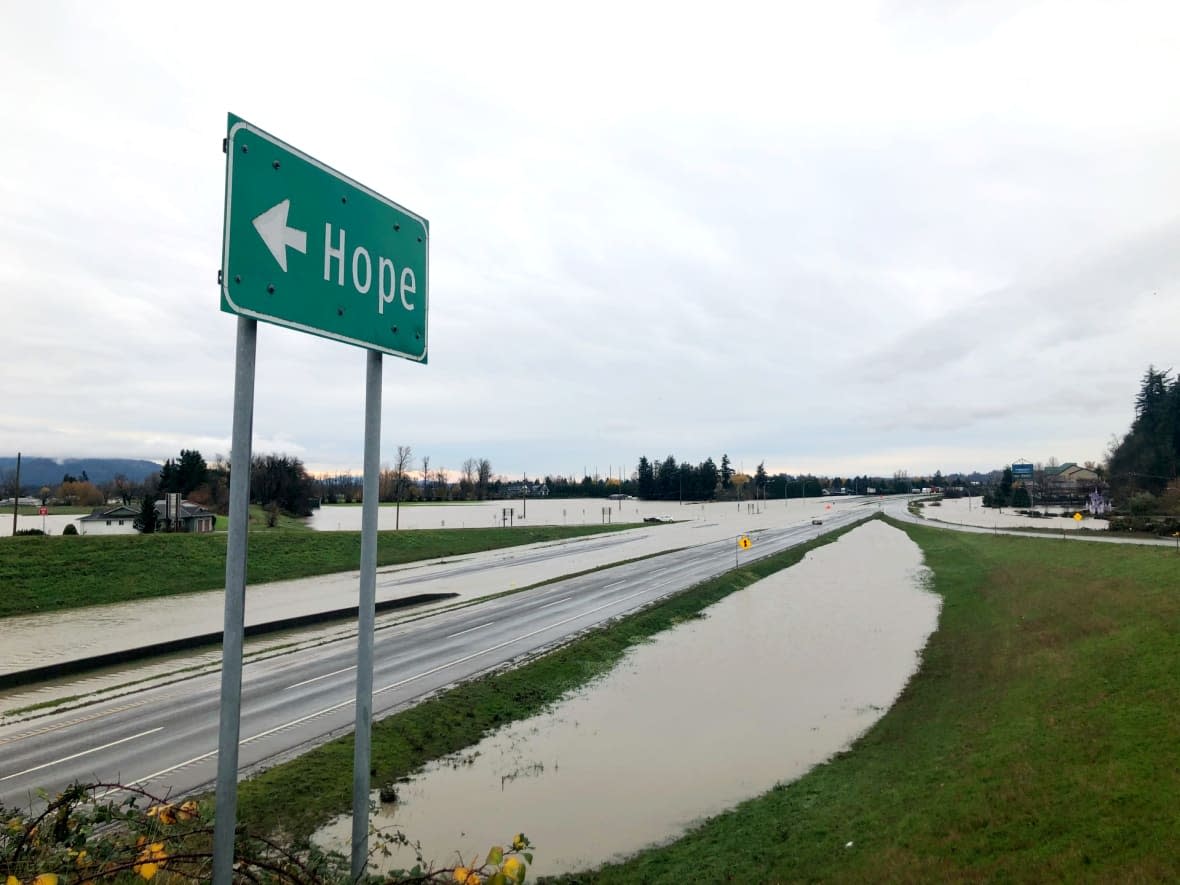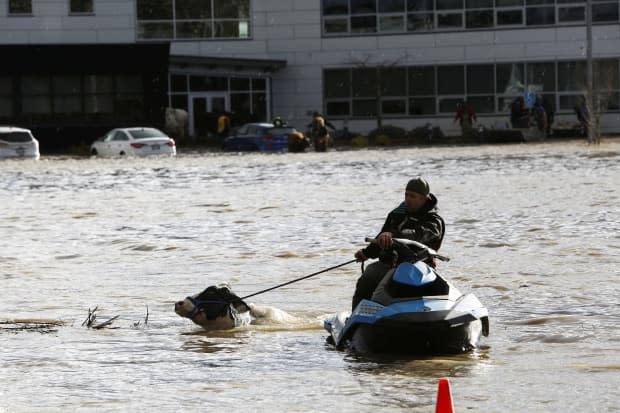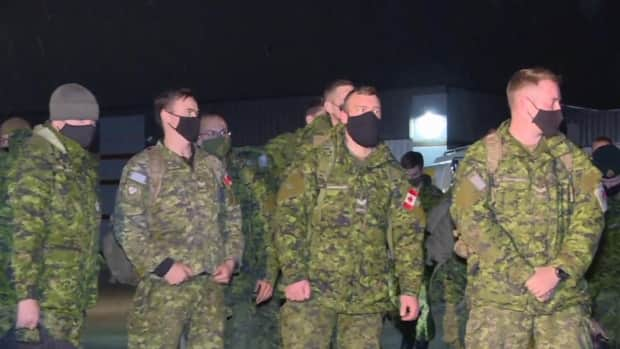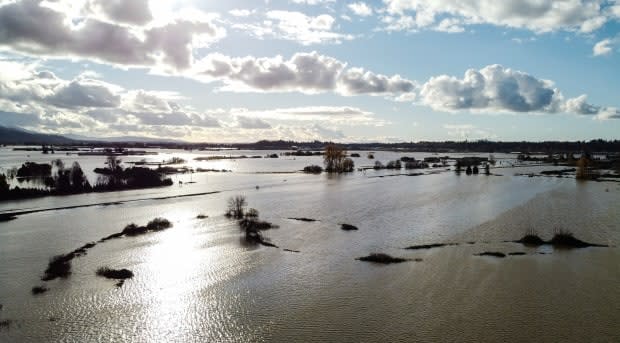Federal assistance arrives in B.C. as province starts rebuilding from floods

THE LATEST:
17,000 people are currently evacuated from their homes in B.C. 6,900 properties are under evacuation order, with a further 2,700 under evacuation alert.
British Columbia has begun the mammoth task of assessing damage to its transportation networks, infrastructure and thousands of properties along the southern part of the province in the wake of devastating floods. The province also expects the death toll to rise.
Thousands of people remain out of their homes and thousands of farm animals and livestock were also imperilled as waters washed away homes and left farms under metres of water as the province declared a state of emergency on Wednesday.
The flooding was caused by record rainfall last weekend.
The state of emergency will last two weeks and could be extended. It allows the government greater control over supply chains, as access to Metro Vancouver remains constrained by damaged highways.
In addition to the state of emergency, the province said Thursday that those affected by the floods will be eligible for financial assistance. Disaster Financial Assistance is available for anyone who is unable to obtain insurance to cover disaster-related losses, and applications are open until Feb. 12, 2022.
A handful of Canadian Armed Forces members have arrived in the province to assist, the first of what Prime Minister Justin Trudeau has said could be several hundred troops.
WATCH | Abbotsford residents rally to protect vital pump station:
The Canadian Joint Operations Command says nine members of the Edmonton-based 3 Canadian Division Immediate Response Unit arrived in B.C. overnight to start scoping out the scene before planning and co-ordinating ongoing relief efforts.
One woman has been confirmed killed in a mudslide on Highway 99, but B.C. Premier John Horgan said he expects officials to confirm more deaths in the coming days.
Thousands of animals have perished in the floods and the government says it will work to get veterinarians into farms to treat animals. Some of the animals that escaped the floods are expected to be euthanized.
"It is a very difficult time for our producers," B.C. Agriculture Minister Lana Popham told a news conference, nearly in tears as she described the widespread flooding as an "agricultural disaster."
Popham said hundreds of farms have been affected provincewide by the floodwaters, many in the Fraser Valley, about an hour's drive east of Vancouver. At a media conference on Thursday, she said other jurisdictions were reaching out to the province to help with providing feed and water for affected animals.
Satellite imagery from space shared by Canadian astronaut Chris Hadfield shows the devastating extent of the flooding in the Fraser Valley and massive amounts of top soil being pushed by the river out to the Pacific.
The area has been one of the hardest hit by floods, with evacuation orders still in effect for the city of Abbotsford.

Water levels drop in Fraser Valley, but more rain coming
Abbotsford, known for its rich farmland, is home to roughly half of all the dairy farms in British Columbia. Dozens of dairy and chicken farms have been overwhelmed by water in the low-lying, rural area of Sumas Prairie, the hardest-hit area east of the city's centre.
The region escaped a more catastrophic flood Tuesday night after volunteers helped build sandbanks around a pumping station, according to Mayor Henry Braun.
However, there were signs Thursday that the community wasn't out of danger yet. Abbotsford police tweeted that water levels were beginning to rise again on the eastern part of Sumas Prairie and pleaded with drivers to respect highway barriers as conditions could change rapidly.
"We are not out of this by a long shot," said Braun. "I'm not concerned about today's rain, what I'm concerned about is next week. There's predicted 80 to 100 millimetres."
WATCH | Did the draining of a lake 100 years ago contribute to flooding?
He said dike repairs would be needed to avert even more disastrous conditions, with work set to take weeks and involving the support of federal and provincial officials. According to Braun, the price tag for fixing all the damaged infrastructure in the town of 120,000 could reach a billion dollars.
The first step will begin Friday with the aid of military personnel, who will help build a levee to stop water from spilling across the Trans-Canada Highway.

The levee will be approximately 2.5 kilometres long and might cause some residents to lose their properties, the city said. Braun said approximately six to 12 properties will be affected, with residents notified ahead of time.
Water supply was also slowly being restored to the Sumas Prairie area on Thursday after a water-main break earlier in the week. A boil water advisory is in place as the supply is restored.
Some highways reopen
However, provincial officials have urged residents to avoid travel unless it's essential even as some highways opened around the province.
Highway 7, a key link between the Lower Mainland and the communities of Hope and Agassiz to the east, opened on Thursday afternoon for vehicles making essential journeys, with the highway open to single-lane alternating traffic.
The Malahat highway on Vancouver Island also opened earlier than expected on Thursday. It will now be open throughout the day for single-lane alternating traffic, with forecasted overnight closures now no longer needed.

Transportation and Infrastructure Minister Rob Fleming tweeted Thursday that almost all people stranded in Hope have now been able to leave town. A train carrying more than 150 people stranded there when the highways closed also arrived in Vancouver at around 2:30 a.m. PT Thursday.
Most of the major highways, including the east-west Trans Canada Highway and the Coquihalla (Highway 5), remain damaged by significant washouts.
"Our focus is on clearing, repairing and reopening roads to connect the Interior and the North to the Lower Mainland and Vancouver Island, to get our supply chains moving," said Fleming in a statement.
The transportation minister said the priority now is to get Highway 3 operational, saying the route to the Interior would "hopefully" re-open by the end of the weekend.
WATCH | How future flood damage could be mitigated:
READ MORE:
Anyone placed under evacuation order should leave the area immediately.
To find an evacuation centre close to you, visit the Emergency Management B.C. website.
Evacuees are encouraged to register with Emergency Support Services online, whether or not they access services at an evacuation centre.
Road conditions can be checked at DriveBC.


